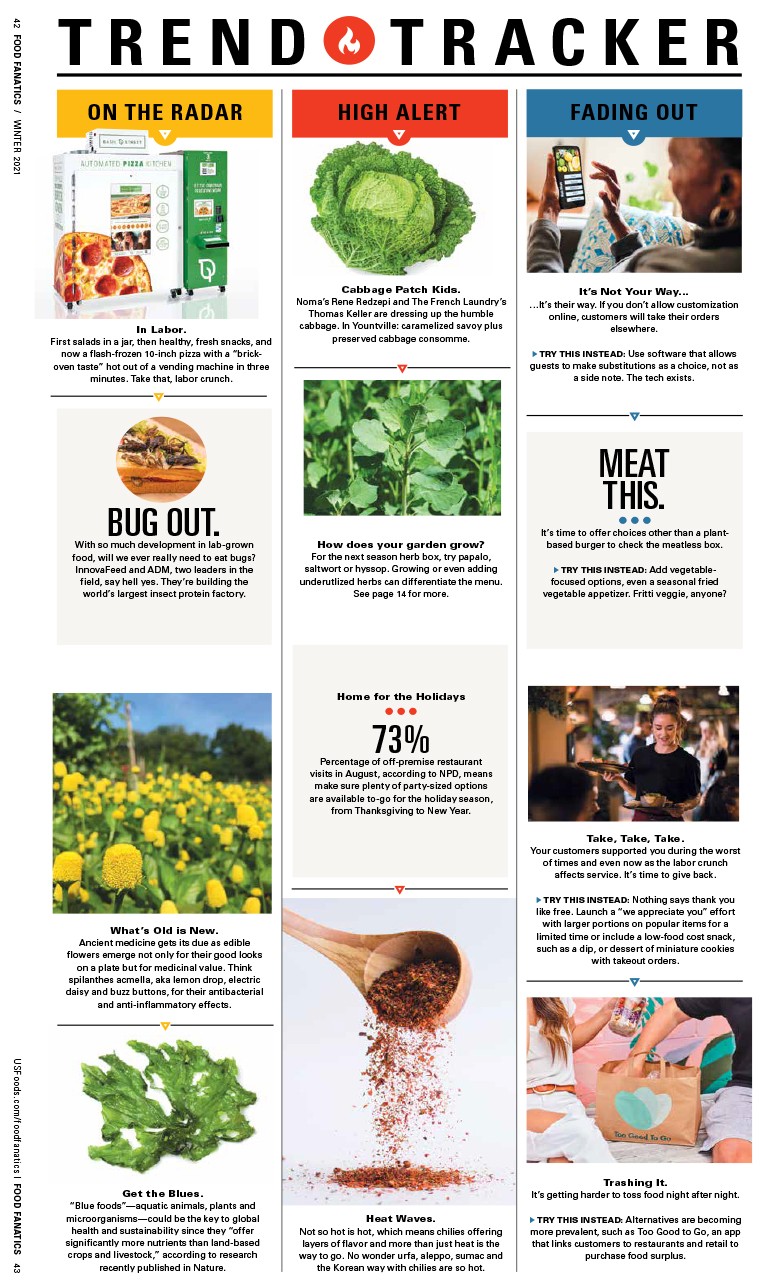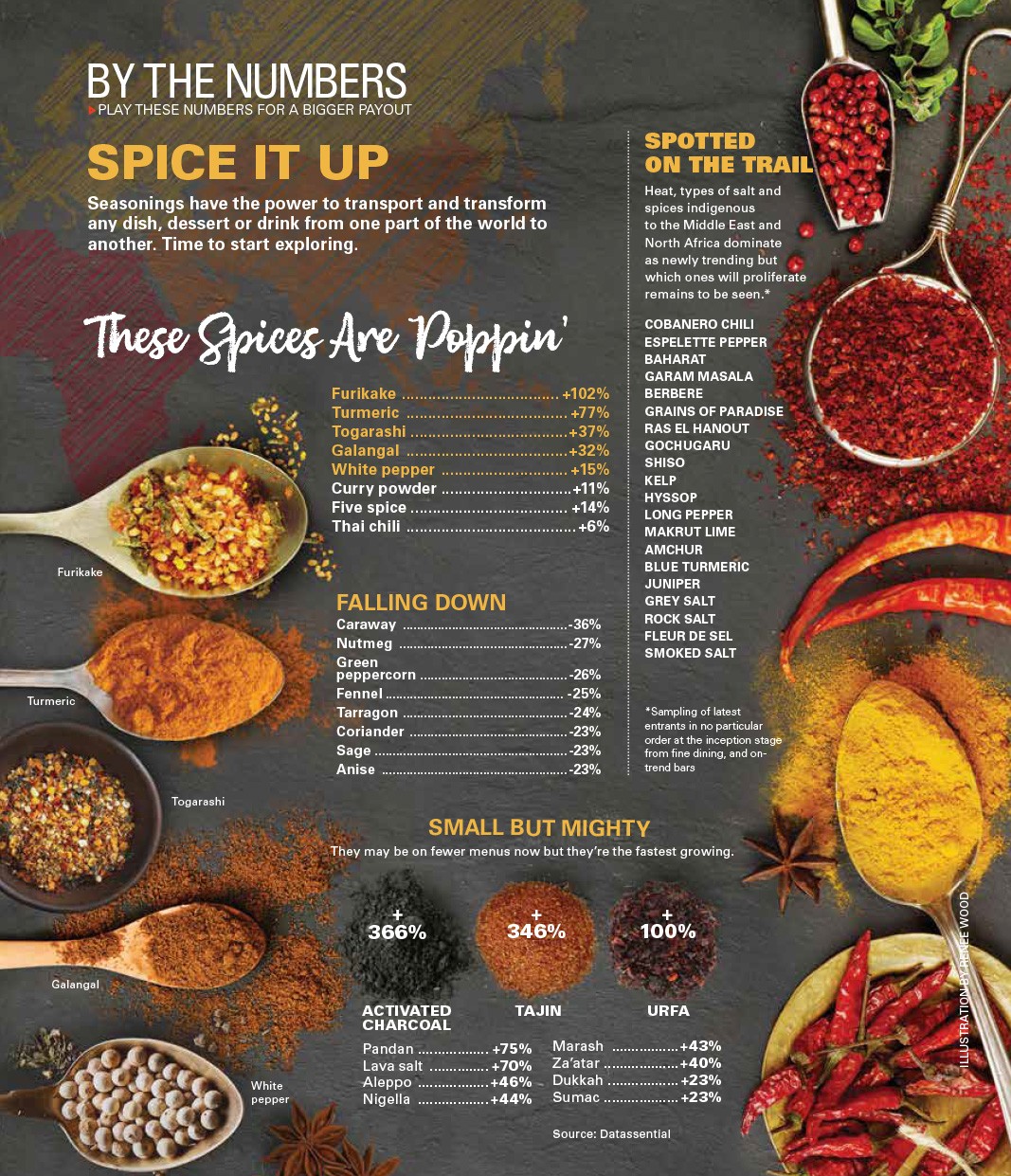NEW TAKES ON TRADITIONAL CARIBBEAN FOOD
If you haven’t given Caribbean food a second thought, the latest takes on island cuisine should definitely grab your attention.
Breaking out of the dated pan-Latin phase of the ’90s, chefs are updating traditional dishes with innovative techniques that bring the complex sweet-spicy flavors of the West Indies, Cuba and Puerto Rico stateside.
“The time I spent in the States, I really never went to a Puerto Rican restaurant and left satisfied,” says Chef-owner Jose Enrique, who was named Food & Wine’s Best New Chef in 2013 and returned to his native island to open Jose Enrique, Capital, Miel and El Blok.
“It just wasn’t fun, the food wasn’t great and I left unhappy, he says. “That’s what I feel has started changing. I think people are starting to take a little more pride in their food.”
Global Impact
Out of a troubled history, Caribbean food evolved into one of the world’s great syncretic cuisines, its native staples influenced by international flavors and traditions brought by conquerors, colonists, slaves, laborers, traders and merchants.
The indigenous Taino, Arawaks and Caribs cultivated beans, chilies, cassava, pumpkin and cilantro—and invented barbecue. Spaniards landed with salt fish, pork, garlic, vinegar and wheat. Africans contributed plantains, yams, okra, pigeon peas and taro root. The British planted sugarcane. East Asians came with curry and wok cooking. As such, each island developed distinct food traditions blown by the winds of change.
For decades, Caribbean food was a stealth cuisine stateside, thriving quietly in outlying city neighborhoods packed with recent immigrants. Jerk chicken and curry conch roti settled in Crown Heights, Brooklyn; Cubanos and vaca frita (crispy beef) in Little Havana, Miami; lechon (roast pig) and papas rellenas (potato croquettes) in Chicago’s Humboldt Park.
In the mid ’90s, Caribbean flavors swam mainstream with the Nuevo Latino movement. Chefs like Douglas Rodriguez, who has Cuban restaurants in Philadelphia and Miami Beach, used pan-Latin fusion to showcase the ingredients of Central and South America, and the Caribbean islands.
American palates adopted jerk seasoning and tropical ingredients like mangos and plantains, but exploration of Caribbean cooking as a stand-alone cuisine has remained under the radar—until now.
Puerto Rican Cooking Goes Modern
San Juan’s Jose Enrique is a 10-minute walk from the beach. Each day, the chef writes his menu based on the local catch. He’s making lighter, brighter versions of the heavy cocina criolla (native cooking), raising the acidity of soups and stews by subbing water and orange juice in place of heavy stocks.
Instead of rehydrating dried salt cod for the classic ensalada de bacalao, he buys fresh cod, salts it for two days before searing the fish, and serves it with local tubers, avocado, onions, tomato and a sous-vide egg.
“You’ll have people coming in who have been eating Puerto Rican all their life,” he says. “They’ll recognize the flavors, but maybe they won’t really recognize the dish. They’ll be like, ‘Oh, what’s this?’ And they’ll take a couple bites and it’s, ‘Wow it tastes just like my grandma’s.’”
Colonial influences: Spain, Africa,
United States
In the walk-in: plantains, pigeon peas, cilantro, wild oregano, achiote (annatto infused fats), recaito (cilantro, culantro, onion, garlic, green bell pepper, sweet chilies)
National dish: arroz con gandules—rice and pigeon peas cooked in sofrito
Open-Door Cuba
Colonial influences: Spain and Africa
Traditional Ingredients: sofrito (onions, garlic bell peppers), rice, black beans, viandas (yucca, malanga, potato)
National dish: ropa vieja (“old clothes”)—shredded flank steak stewed in tomato
Thawing diplomatic relations between the U.S. and Cuba signal a leap forward in mainland appreciation for the island’s food. Several Miami chefs, such as Rodriguez and Jamie DeRosa of Tongue and Cheek, have been leading cultural and culinary tours across the Florida Straits. Increased tourism overall is also likely to have an impact.
“Americans are finally going to realize that the food that they have been eating at Cuban restaurants like Versailles in Miami is very different than what they eat (in Cuba) today,” says Guillermo Pernot, chef-partner of Cuba Libre Restaurant & Rum Bar, with locations in Philadelphia; Washington, D.C.; Orlando, Florida; and Atlantic City, New Jersey.
To promote Cuban food, Pernot began bringing chefs from Havana in 2012 to run pop-ups in the U.S. “There are chefs making unbelievable stuff in Cuba now,” he says. “It is more sophisticated and versatile than most would expect.”
Americans are finally going to realize that the food that they have been eating at Cuban restaurants like Versailles in Miami is very different than what they eat (in Cuba) today.
-Chef-partner Guillermo Pernot of Cuba Libre Restaurant & Rum Bar
That’s also true in the States. Chef Eleazar Fuerte of Son Cubano in West New York, New Jersey, draws on his two-year stint cooking in Singapore to add Asian flavors to upscale Cuban food, often with ingredients from both hemispheres. He serves a Cuban-Thai mango salad with cilantro, habanero and palm sugar-sweetened vinaigrette, and amps up a seven-seafood soup with coconut milk and chilies.
Fuerte’s vaca frita moderna, an updated riff on the crispy shredded beef dish, starts with sous-vide flank steak. Once tender, it’s seared on the flat top and served with a taro root and goat cheese purée.
An Evolved Jamaican Jerk
Colonial influences: Spain, France, Africa, Great Britain, India, China
Traditional Ingredients: allspice, Scotch bonnet chilies, ackee, saltfish, curry, sugarcane, taro
National dish: jerk chicken—allspice and Scotch bonnet rubbed, and smoked over pimento wood
Jamaican food may have penetrated mainland consciousness, thanks to the smoky allspice and Scotch bonnet alchemy of jerk spices synonymous with chicken. Chefs, however, know it can be so much more.
At Miss Lily’s 7A Cafe in Manhattan, Chef-owner Adam Schop makes a jerk ramen stock from reserved jerk chicken, pork bones and dashi. It’s served with alkalized noodles, jerk pork belly, shoyu-marinated ackee fruit (a fleshy native fruit used as a vegetable) and fermented scotch bonnet paste.
Patois in Toronto showcases the culinary contributions from the Caribbean’s Chinese population with jerk chicken chow mein. Chef-owner Craig Wong chops a live lobster and stir-fries the pieces in butter and jerk paste.
“The Jamaican palate is a bit more suited to spice, and (Jamaicans) like a lot of sweetness as well,” Wong says. “It really bridges the gap over to Chinese, which is very umami-driven.”
Chef-owner Michael Jacober of Glady’s in Brooklyn, New York, who’s clocked time at Manhattan fine dining institutions Per Se and Anissa, devotes a menu section to jerk. That’s one of the ways he keeps the Caribbean restaurant real. He also imports sweetwood and pimento wood for the grill, and stays true to a simple approach with dishes like whole fish. It’s grilled, steamed or fried, and paired with a flash pickle of julienned vegetables.
“It was definitely nerve-wracking being a white guy cooking Caribbean food in a Caribbean neighborhood,” he says of Brooklyn’s Crown Heights section. “I still get tons of skepticism, but it’s cool because people try the food and it’s immediate acceptance.”
TRINIDAD AND TOBAGO - The Rainbow Country
Colonial influences: Spain, Great Britain, Netherlands, India, Africa, China, Syria, Lebanon
Traditional Ingredients: chickpeas, amaranth, taro, coconut, curry, habaneros, cassava, shark
National dish: crab and callaloo—shellfish and taro leaves stewed in coconut milk
No island cuisine has had more world influences than Trinidad and Tobago’s.
Its appeal is palpable in Seattle, which had no Trini food until 2006. That’s when former housekeeper Pam Jacobs opened Pam’s Kitchen, at a time when the city “needed an education” on roti—pan-fried flatbread made from chickpea or wheat flour, stuffed with curried chicken, beef, lamb or goat. She makes them from scratch, just like her sweet milk-based peanut and pumpkin punches, and bittersweet mauby, a beverage made from boiled buckthorn tree bark.
In nearby Tacoma, Washington, Trini food is surging, thanks to Kerry Ramroop’s food truck Kerry’s Caribbean Takeout. Spicy jerk chicken is his biggest seller, but he frequently serves Trini dishes like cheesy macaroni pie, thick corn soup, dried fruit-studded coconut sweetbread and cumin-saturated “Geera” pork tenderloin.
He relies on the power of scent to bring customers to the truck. “It’s very aromatic when you cook from scratch,” he says.
Off-Island inspiration
One rather compelling indication of Caribbean cuisine’s potential to explode lies in Roy Choi’s Sunny Spot in Venice, California. Here, Choi, the father of the food truck revolution and the chef responsible for popularizing Korean food in the U.S., is riffing on traditional dishes like Puerto Rican mofongo, mashing plantains with applewood bacon, fennel, chili vinegar and ginger oil; and tossing Jamaican-style braised oxtails with pasta, mustard greens, and chilies.
It may not be long before goat curry, mofongo and jerk chicken burritos are as common as the kimchi taco.
Digital Exclusive
Birth of a Sandwich
In 1996, Juan C. Figueroa was struggling to keep his little Puerto Rican restaurant afloat in Chicago’s Humboldt Park neighborhood.
While kicking back with the newspaper one morning, he read about a sandwich made with plantains instead of bread. Inspired, he split a plantain lengthwise, deep-fried it and smashed it flat in a hand press. On one side, he piled grilled beef, tomato, lettuce and mayo; on top, he smeared garlicky mojo criollo.
The contrast between the crisp, hot plantains, juicy beef and cool vegetables was so appealing, his father ate one every day for a month. Dubbing his creation the jibaro, the hillbilly took off and launched the first Borinquen. Within a few years, Juan was cranking out 500 to 1,000 a day.
The gloriously sloppy sandwich—also known by the diminutive jibarito—has a short shelf-life, but it has inspired countless competitors and variations featuring Cuban ropa vieja, crab, tofu and brown rice, and the apocryphal, but no less appealing, corned beef-and-latke heeberito.
Figueroa’s Borinquen is no more, but his creation lives on beyond Chicago—though oddly, it hasn’t caught on in Puerto Rico. According to Chef Jose Enrique, who owns four restaurants on the island, he’s only seen it served at a few food trucks, where it goes by another name.



